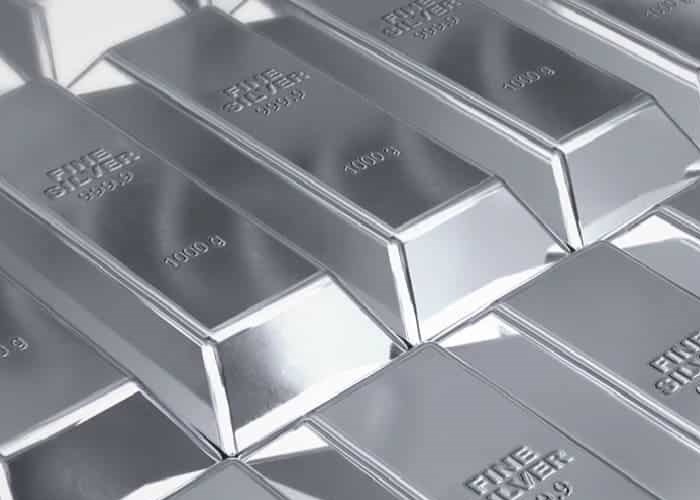In recent years, silver has attracted attention not only as a precious metal with cultural significance but as a significant financial asset that plays a vital role in global markets. The price of silver, influenced by a myriad of economic factors, tends to experience volatile shifts. This is attributed to its dual nature: while gold is predominantly seen as an investment vehicle, silver functions as both a financial asset and an industrial commodity. This article will delve into these key arguments to present a comprehensive perspective on the trajectory of silver prices in the near future.
Industrial Demand and Technological Advancements
One of the primary factors influencing silver prices is its industrial demand, which makes up a significant portion of total consumption. Silver’s unique properties—such as high electrical conductivity, reflectivity, and antimicrobial features—make it indispensable in various industrial applications.
Renewable Energy and Electric Vehicles (EVs): The expansion of renewable energy technologies, particularly solar power, has bolstered the demand for silver. Photovoltaic (PV) cells in solar panels rely heavily on silver to conduct electricity efficiently. According to the Silver Institute, around 10% of global silver demand is attributed to solar technology, a figure that continues to grow as governments worldwide push for clean energy initiatives. Additionally, the rise of electric vehicles (EVs) is another crucial factor, as silver is used in electrical contacts and batteries.
Emerging Technologies: Innovations such as 5G technology and the Internet of Things (IoT) have also contributed to an increase in silver consumption. The integration of these technologies requires components that leverage silver’s superior conductive properties. If technological advancements continue on their current trajectory, it is reasonable to anticipate a significant uptick in silver demand, exerting upward pressure on its price.
Monetary Policy and Inflationary Pressures
Another crucial determinant of silver prices is the macroeconomic environment, particularly monetary policy and inflation trends.
Hedge Against Inflation: Similar to gold, silver is often viewed as a safe haven during times of economic uncertainty and inflation. Historically, when inflation rises and fiat currency depreciates in value, investors tend to flock to precious metals to preserve wealth. The current economic landscape, marked by persistent inflationary pressures in many economies due to supply chain disruptions, wage increases, and high energy prices, has contributed to heightened interest in tangible assets like silver.
Interest Rates and Central Bank Policies: The policies of central banks, such as those of the Federal Reserve, directly impact silver prices. Typically, higher interest rates can dampen the appeal of non-yielding assets like silver. However, with continued concerns about global debt levels and the possibility of interest rate hikes slowing down, a shift towards looser monetary policy could spark renewed interest in silver as an investment.
Supply Constraints and Mining Challenges
Supply constraints can significantly impact silver prices. Unlike gold, silver mining often takes place as a byproduct of other metal extractions, such as copper and zinc. This implies that the supply of silver is somewhat tied to the production rates of these base metals. Several factors contribute to potential supply issues:
Depletion of Existing Mines: Many existing silver mines have faced declining ore grades over the years. This trend results in lower yields and higher extraction costs, thereby limiting the supply. New mining projects often require substantial capital investment and long lead times to become operational, meaning that any immediate increase in silver supply is unlikely.
Geopolitical Risks and Environmental Regulations: Silver mining, like other extractive industries, is susceptible to geopolitical instability and environmental regulations. Countries that dominate silver production, such as Mexico and Peru, may face political upheavals or stricter environmental laws that restrict mining activities. Such conditions can exacerbate supply shortages and drive up prices.
Recycling Limitations: While recycling contributes to the silver supply, it is not enough to meet the growing demand. The complexity and cost associated with extracting silver from electronic waste and other products pose challenges to supplementing the market through recycling.
Global Economic Trends and Investor Sentiment
Silver’s role as an investment vehicle is another critical aspect that shapes its price trajectory. Unlike industrial demand, which is more predictable, investor sentiment can fluctuate based on broader economic conditions.
Market Volatility and Safe-Haven Appeal: During periods of geopolitical tensions or financial instability, silver often benefits from its reputation as a store of value. For example, in times of crisis, when stock markets decline or currencies weaken, investors may turn to silver as a less expensive alternative to gold. The ongoing geopolitical tensions in regions such as Eastern Europe, coupled with global supply chain disruptions, contribute to an environment where silver could gain prominence as a safe-haven asset.
Speculative Investment: The advent of financial products like silver-backed Exchange-Traded Funds (ETFs) has made it easier for retail and institutional investors to include silver in their portfolios. Such financial products can amplify demand quickly, influencing price movements. Although silver can be more volatile than gold, its potential for significant gains in times of economic uncertainty makes it attractive to risk-tolerant investors.
Conclusion
Silver is not just another precious metal; it is a multifaceted commodity with extensive industrial applications and financial significance. From the ongoing expansion of renewable energy and technological innovations to macroeconomic conditions and supply constraints, multiple forces are poised to drive up the price of silver. While no forecast can account for unforeseen economic shifts, the current indicators suggest a positive trajectory for silver prices in the coming years. For investors and industry stakeholders, monitoring these trends will be crucial for making informed decisions.
Related topics:
- Understanding Axis Gold ETF: A Comprehensive Guide
- What Is RSBL Gold? A Comprehensive Guide
- What Is SBI ETF Gold? A Comprehensive Overview


